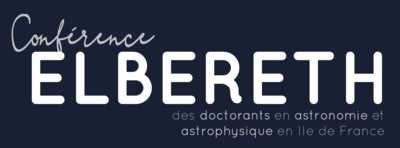Orateur
Description
Gravitational waves are very small variations of space-time metric which can
be detected with high precision laser interferometry. The LISA method consist
of measuring distance fluctuations between free-falling test masses.
As with any detector, signal to noise ratio has to be optimised. In actual ground-
based interferometers like LIGO/VIRGO experiment, sensitivity is limited by
seismic and quantum noises. In the LISA case, the raw measurements are
burried within the laser frequency noise. Actually, due to the LISA constellation
geometry, the phase fluctuations due to the laser instabilities dominate by 8
orders of magnitude the gravitational wave signal.
A noise reduction method named Time Delay Interferometry (TDI) was devel-
opped in the 90’s. Recombining in post-processing the interferometric signals,
it will remove the laser frequency noise of future LISA data. This algorithm is
crucial for the success of the LISA mission and needs to be tested with simulated
data before launch.
For several years and with the support of CNES, an electro-optical bench for
metrological demonstration named LOT (for ”LISA On Table”) has been set up
at APC. The objective of this bench is to demonstrate experimentally several
aspects of TDI, characterize its frequency response and assess the noise residuals.
According to the last results, TDI works properly with a reduction factor of
the laser frequency noise around 10 7 for the optical interferometer and 10 8
for the electronical interferometer, using TDI 1.0 for a simplified static LISA
constellation. These results and future improvement of the LOT allowing to
simulate Doppler and Sagnac effects in order to test TDI 2.0 will be presented.
| Field | Instrumentation |
|---|

